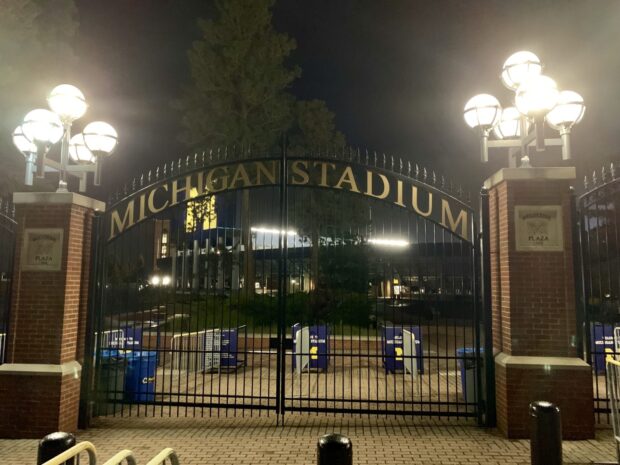Higher education faces some big issues, so it’s fitting to meet on a big campus to learn more about them.
This week, reporters from across the nation gathered at the University of Michigan for the Education Writers Association’s annual higher education seminar — “Demographics, Politics and Technology: The Forces Reshaping Higher Education.”
This was my first chance to attend a higher education seminar, although Idaho Education News staffers have attended numerous EWA conferences since our site’s launch in 2013.

Three personal observations.
- First, the University of Michigan’s Ann Arbor’s campus is huge, as you might expect at an institution with nearly 44,000 students (nearly the combined enrollment of Boise State University, the University of Idaho and Idaho State University.)
- Second, the 107,601-seat Michigan Stadium, also known as the “Big House,” is indeed a big house. I personally verified this on an early morning run.
- Third, so much maize, so much blue. The university’s iconic color combination is, well, everywhere.
OK, now back to those three themes from the title of this week’s seminar.
It’s no secret to anyone following Idaho higher education that demographics matter — a lot. College and university leaders hope to attract a more diverse student population, and keep these students on campus and on track toward a degree. But Kedra Ishop, a first vice provost at the University of Michigan, cautioned reporters against oversimplifications. First-generation students aren’t all students of color or students living in poverty; some are rural students with unique stories and unique needs. Certainly, that applies in Idaho.
As we all have likely noticed by now, higher education is a hot-button political topic in Idaho. During a panel on the politics of higher education, Neal McCluskey of the libertarian-leaning Cato Institute ventured to speculate on the conservative backlash. Concerns about free-speech restrictions on campuses, coupled with rising costs, have caused some conservatives to question funding a system that they see as hostile to conservative politics.
In Idaho and across the nation, colleges are looking to expand online offerings, making courses more accessible beyond their campuses. That should reduce the cost of a college education by cutting overhead, said John Katzman, CEO of The Noodle Companies, an education technology firm. If that doesn’t happen, the savings might be subsidizing something else in a university’s budget.
We also spent time perusing college financial aid award letters, to get a sense of how confusing and frustrating they can be to students and parents. We navigated the U.S. Department of Education’s database on colleges and universities — a trove of numbers for future stories.
And we heard from a student and a teacher at Central New Mexico Community College, which uses a unique badging system to measure their students’ soft skills (such as empathy, oral communication and collaboration). I’m writing more about this topic for EWA in the near future, so look for a followup on this page.
So I’m back in Boise with maize and blue on the brain, but also a lot of notes and ideas. If you have ideas about what we should cover about higher education — especially as the 2020 legislative session approaches — drop me an email.
